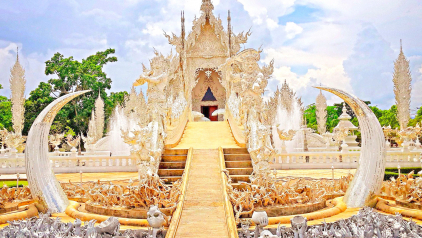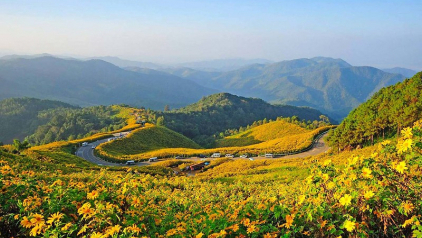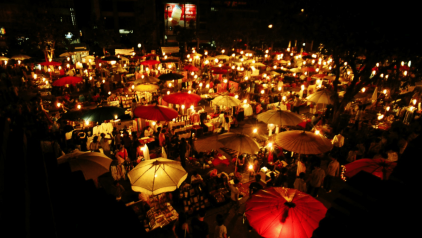Chiang Mai: land of misty mountains and colourful hill tribes
Chiang Mai city is the fifth largest city (according to the population size) of Thailand. Located about 800 km north of Bangkok, Chiang Mai is situated on the mountainous terrain of the highest type in Thailand. The city runs along the right bank of the Ping River, one of the largest and most important tributaries of the Chao Phraya River. Adjacent to Chiang Mai city, on the left bank of the Ping River is Lamphun town (the capital of Lamphun province). These two adjacent towns form the Chiang Mai Metropolitan Area.

Chiang Mai city
The main sights of Chiang Mai are ancient temples and bold Lanna architecture with curved wooden roofs on the top, intricate carvings inside along side many plated antiques and precious gold Buddha images. Chiang Mai city is therefore beautiful, peaceful and extremely sacred. Not only that, Chiang Mai also owns many beautiful natural landscapes, wild nature reserves and shopping as well as artistic destinations. These spectacular sights seeing will definitely leave an indescribable impression in every tourist’s hearts.

Lanna architecture in Chiang Mai
Chiang Mai history events:
Chiang Mai was the capital of the Kingdom of Lanna after it was founded in 1296, around the same period as the Kingdom of Sukhothai. In 1599, the kingdom lost its independence and became part of the Kingdom of Ayutthaya. In 1932, Chiang Mai province became a second-level administrative unit of Thailand when the administrative unit Monthon Phayap, the ruins of the Kingdom of Lanna was dissolved.
Chiang Mai used to be the capital of the nation of Lanna. It can be said that Chiang Mai is a historical witness of many ups and downs of Lanna from its founding (around 1254) to the glorious development as well as its decline due to the strong progress of the neighboring nations (Sukhothai, but mostly Ayutthaya and especially Burma). From the late 18th century onwards, Chiang Mai and the entire Lannathai nation were merged into the map of Thailand, even though administratively, this merge only officially took place in the late 19th century, when the last king of Lannathai passed away and the Siamese government refused to take his heir to the throne.
Main attractions in Chiang Mai:
- Doi suthep: When mentioning the famous temples in Chiang Mai, people remember Doi Suthep first. Not to mention the design or architecture of the temple, but even the path to the temple is extremely beautiful. The road from Doi Suthep Mountain to the temple is covered with lush trees and the magnificent Huay Kaew waterfall, bringing tourists a sense of peace and relaxation. The pagoda was built in 1383 and situated at a height of 1,073m. From this wonderful temple, you can overlook the whole city of Chiang Mai. Phrathat Doi Suthep Pagoda is considered as a symbol of Chiang Mai. Over the past 600 years, the pagoda has been through many changes and is repaired many times. According to a monk here: It used to take 5 hours to reach the top of the mountain through a narrow, small and undulating path, which is very difficult for pilgrims to visit the temple. In 1934, the monk Kruba Srivichai came to Chiang Mai to build a road to the temple. News spread fast, so Buddhists from everywhere gathered here to contribute, including ethnic minorities living in the mountains.

Wat Phrathat Doi Suthep Temple
- Wat Umong: This is the oldest temple in Thailand with over 700 years of age, associated with national history. That's why Umong has an ancient beauty with moss, cracks, rust due to weather and crumbling. All exude the sacred beauty and timelessness of the temple. The temple gate is guarded by lush trees and two ancient statues, preventing the dark forces from entering. The highlight of Umong is the domed maze tunnel system built in the late 14th century with fired bricks. On the top of the tunnel, there is a stupa. In the main hall there are Buddha statues with many different shapes. If you want to learn about the formation and development history of Buddhism in Thailand, the collection of antiques and documents in the tunnel is a great answer.
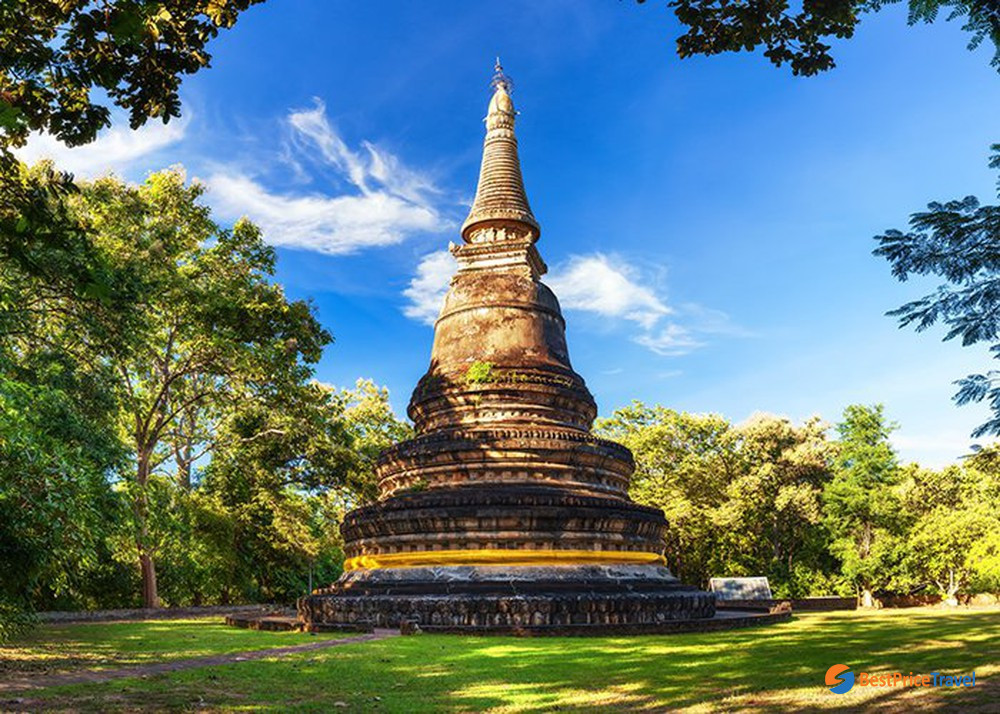
Wat Umong
Chiang Mai Culture:
Chiang Mai is an old city famous for countless of ancient temples. Therefore, visiting temples is a “must” activity. While planning your trip and preparing to head to Chiang Mai, don’t forget to pack with you the following necessary belongings: shirts with sleeves, long pants, sweaters and umbrellas. Some notable festivals of the city include: Red Cross Fair and Winter Fair, Flower Festival, Chinese New Year Chiang Mai and Songkran Water Festival. Particularly in February every year, there is Flower Festival, with flower parades on the street. In April there is a water splash festival which signals the beginning of the rainy season.
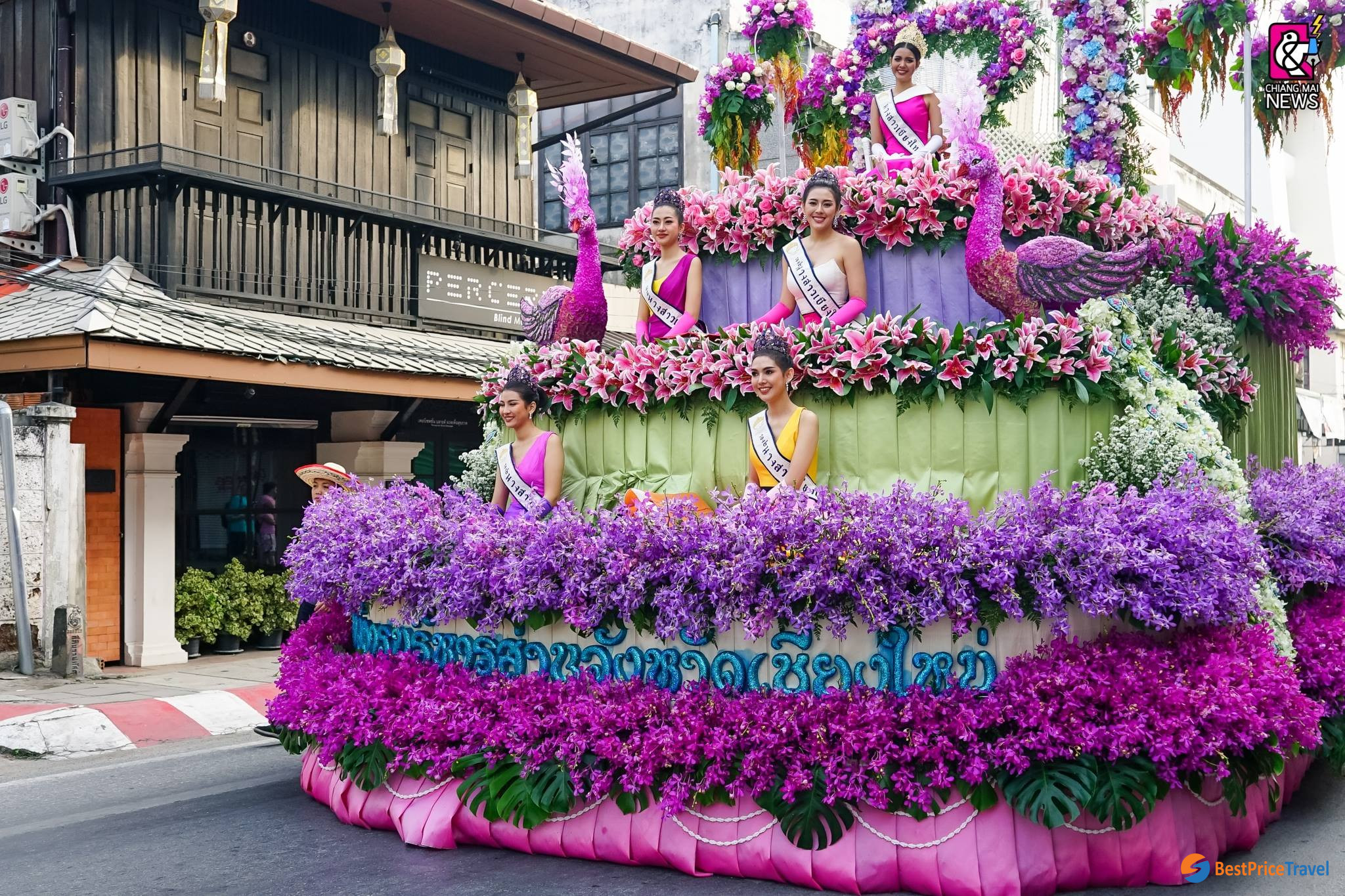
Flower Festival in Chiang Mai
The Loy Krathong Festival during the full moon night in November is also very famous with hundreds of lanterns and fireworks lit up and thousands of boats floated along the Ping River. Lantern festivals usually take place twice, one for local residents and one for foreign tourists.
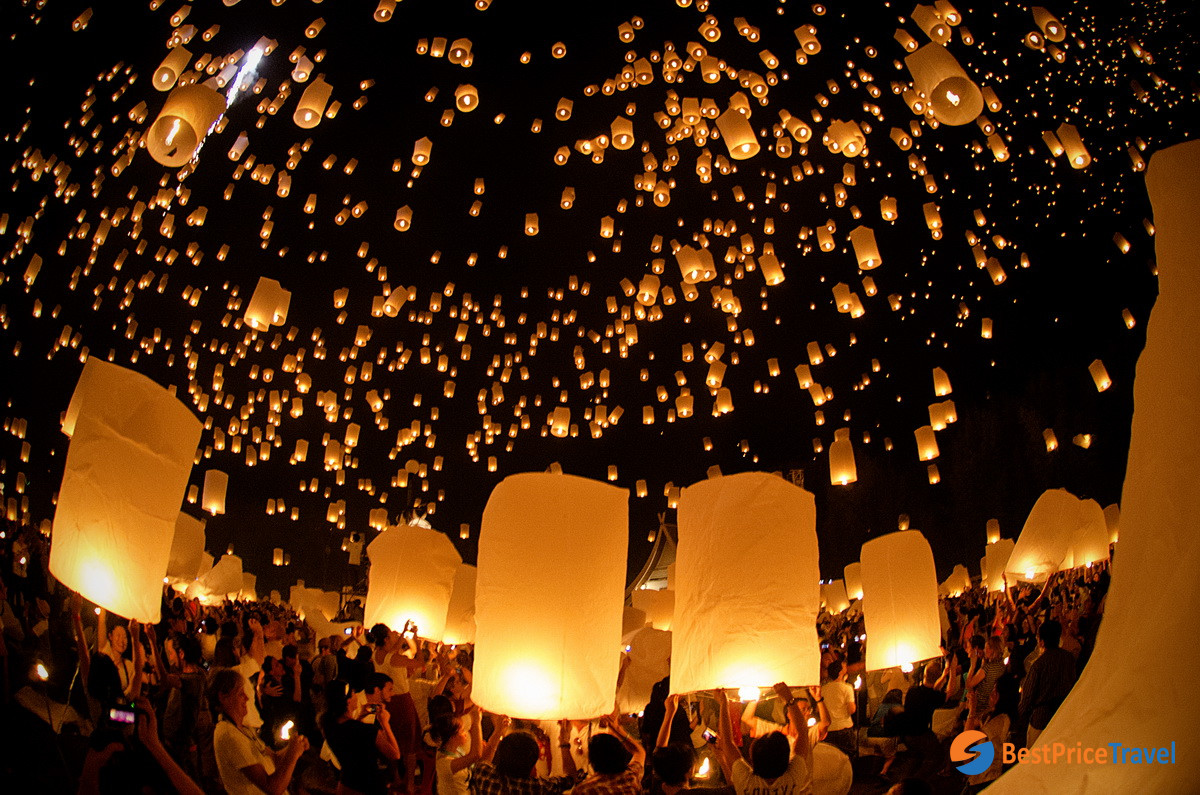
Lantern Festival in Chiang Mai
Chiang Mai Weather:
The best time to visit Chiang Mai is from late November to early February, when the city is covered in beautiful flowers and the weather is nice and pleasant. Chiang Mai’s weather is relatively cool, sometimes cold and foggy. Therefore, tourists are recommended to bring along some sweaters if you plan on visiting Chiang Mai.
Transportation in Chiang Mai
There are many ways to get to Chiang Mai, but the most popular are planes, trains or buses.
After arriving at Chiang Mai, tourists have plenty of choices in terms of transportation around the city:
- Buses in Chiang Mai are small with some are Song Taew buses. Buses are available on lines 2, 4, 6, 8 and 10. Air-conditioned buses run on roads 2, 6 and 10 at a fare of 10 baht per person. Song Taew buses in red plate run lines 4 and 8. Yellow Song Taew buses run from Th Praisani and stop at Chang Pheuak, Tajabhat University and the last station is Mae Rim.
- Tuk tuks are a popular vehicle in Chiang Mai. Tourists can easily catch a tuk tuk on the streets of Chiang Mai. Price depends on the distance traveled. Before going, travelers need to bargain in advance to get the best price.
- Motorbike is the most convenient way to travel in Chiang Mai. The price for renting a motorbike ranges from 200-300 baht / day depending on the type you want to rent. When hiring travelers often have to leave passports.
Recommended Chiang Mai Tours


 Chiang Mai City Temples and Doi Suthep half day9.0Excellent - 1 reviewChiang Mai - Wat Phrathat Doi Suthep - Wat Chedi Luang/pax
Chiang Mai City Temples and Doi Suthep half day9.0Excellent - 1 reviewChiang Mai - Wat Phrathat Doi Suthep - Wat Chedi Luang/pax
